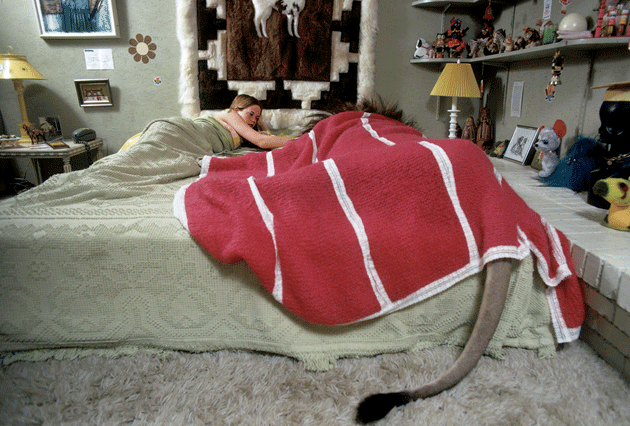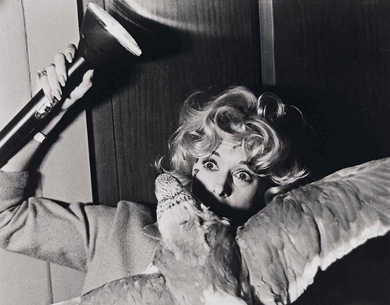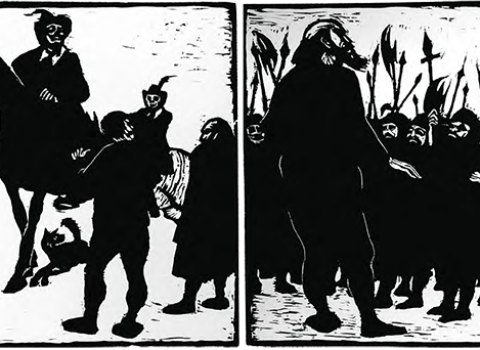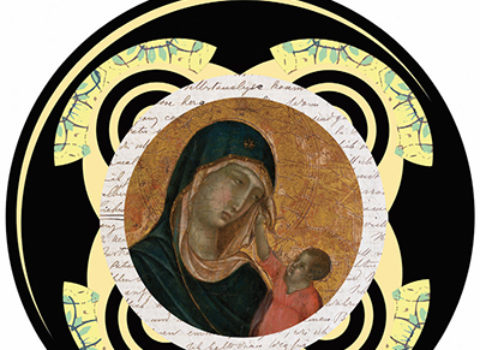Hell hath no fury like a Hitchcock scorned. After the fat man with the famous profile signed Tippi Hedren to a seven-year contract and put her through what was then the most expensive screen test in Hollywood history — in that order — he resorted to more conventional wooing tactics: driving past her house, having her followed, analyzing her handwriting, asking her to touch him. Hedren was willing to give her all to The Birds (1963), but she didn’t appreciate being mauled in the back seat of a limo — and that’s when the props started acting up. First a mechanical bird broke a supposedly shatterproof telephone booth, spraying bits of glass into Hedren’s face. Then she was informed that the bird-bots were malfunctioning and that the climactic “bedroom” scene, in which her character is assaulted by the ravenous flock, would be shot with live fowl. For five days, trained ravens, doves, and pigeons dive-bombed Hedren while she bled and screamed and flapped her hands; some were fastened to her clothes with elastic bands. On the fifth day, one pecked too close to her eye, and The Girl admitted that she couldn’t take any more. “Cut,” Hitch said. He had what he wanted.

Melanie Grifth in bed with her pet lion, Neil, Sherman Oaks, Calif., May 1971 © Michael Rougier/The LIFE Picture Collection/Getty Images.
You might think that a person who had been abused in this fashion would avoid wildlife in the future. But as the model turned actress turned activist recounts in the absolutely charming TIPPI: A MEMOIR (William Morrow, $28.99), in the 1970s, she and Husband No. 2 Noel Marshall went a little batty for big cats. (They do kill birds.) The couple’s obsession culminated in Roar (1981), a big-budget fiasco shot at the high-desert preserve where they lived with 150 animals, including lions, tigers, jaguars, and a tiglon, as well as elephants, flamingos, three aoudad sheep, and four Canada geese. There is a plot, something about an American scientist (played by Marshall; no one else would do it) studying a pride of lions on the veld. His wife and children (played by his wife and children) come to visit, and pandemonium ensues. The finished product has the character of a deranged home movie. And before you jump to conclusions, no, Hedren’s fifteen-year-old daughter, Melanie Griffith, did not move in with twice-married, twenty-two-year-old Don Johnson to get away from the pride. True, the family home in Beverly Hills played host to six lion cubs and an adult male named Neil. But it was only after Griffith moved out that her mother moved into the zoo at Soledad Canyon.
Work on the film began in 1970 and lasted eleven years. Setbacks included a flood, an epidemic that wiped out fourteen felines, and financing woes — at one point, the producers saw the rough footage and asked for their money back. As for the injuries . . . Hedren’s leg was crushed by Timbo, the friendly elephant, which led to gangrene. Lions caused the rest. Griffith was attacked by Sheila. Marshall got one puncture wound in the hand from Casey and eight in the leg from George (those led to blood poisoning); Jerry, Marshall’s son, was bitten near the groin by Mike, who had a thing for tennis shoes. Cinematographer Jan de Bont — he went on to direct Speed, Speed 2, and Twister — was scalped by Cherries. The 475-pound Tongaru “plunged his canines” into the assistant director’s throat, “a few millimeters away from his jugular vein.” Unsurprisingly, there are moments in Roar when the cast seems genuinely anxious, but what’s truly bizarre is how boring it is. The reality of untamed nature is far less scary than a madman and his sound effects.
Tippi is cowritten with Lindsay Harrison, who brought the same chatty tone to The Truth About Psychics, her 2009 collaboration with the medium and television personality Sylvia Browne. It’s got stories galore — three marriages, a coma that deprives Hedren of her senses of smell and taste — and personality to spare. (On taking in two of Michael Jackson’s tigers: “I was really disappointed that he didn’t call, not once, to check on them, nor did he ever send a dime for food and upkeep.”) Hedren insists so many times that she didn’t deserve her big-screen success that you start to believe her. About the only thing she takes credit for is getting Vietnamese refugees interested in the nail business. She had been involved with a charity that rescued and housed the so-called boat people, and when the women got curious about her long, shapely claws, she brought in her manicurist to give a tutorial. Next stop, beauty school. Hedren helped twenty-five women earn their cosmetology licenses and open their own salons. In 2011, the Vietnamese advocacy group Boat People SOS gave her a Service to Humanity award.
Hedren has a keen sensitivity for the afflicted and abandoned. She weaned the blue-eyed cub Billy with a tube and bottle after he was rejected by his mother, and the two became inseparable. She once took him to a fancy restaurant in a picnic basket. When he grew up, though, they could see each other only in isolation. If anyone else was around, Billy would pounce.
A mother named Tosca gives up her son, Knut, in Memoirs of a Polar Bear (New Directions, $16.95), a fictionalized tell-all about a real-life clan of ursine celebrities by Yoko Tawada. “I entrusted Knut’s care to another animal,” she explains. “This wasn’t an easy decision, but because of my literary work I didn’t have enough time for him.” It’s hard to put an opposable thumb on the most fantastic aspect of this book — is it that the bears think, talk, and write, or that they live in a world where literary journals sell out their print runs? The first of three Arctic narrators is raised in a Soviet circus, writes her autobiography, defects to West Berlin, and emigrates to Canada. Tosca, her daughter, is born in Canada and performs in a G.D.R. circus; Memoirs imagines a tender routine in which a “tiny, adorable human woman” places a sugar cube on her tongue and the bear laps it up in a kiss. Knut, like his namesake, is a popular cub reared by humans in the Berlin Zoo whose image is merchandised and marketed in the hope that he will inspire action on behalf of the melting ice caps. (The actual Knut died in 2011 when a brain inflammation caused him to fall into the moat in his enclosure and drown.)
Memoirs of a Polar Bear is smart and weird, if a little muted; it didn’t knock me out like Tawada’s novella The Bridegroom Was a Dog. In that book, the interspecies eroticism is even more pronounced: a man with canine tendencies beds a cram-school teacher, cooks her a stir-fry, and cleans her apartment. “The sheer size of his tongue, the amount of saliva dripping from it, and the heavy panting were all literally extraordinary.” But like those of Bridegroom, the animal characters of Memoirs pursue a hybrid existence, refusing to romanticize the state of nature. “If everything had proceeded according to the natural order, I’d have found a maternal body at the center of our den,” says Knut,
but at the center of the crate I grew up in, there was nothing. In front of my nose was a wall. Was my longing for the world beyond the wall not in and of itself proof that I was a Berliner?
It may be worth mentioning that Tawada, who was born in Tokyo and educated in Hamburg and Zurich, writes in both Japanese and German, and currently lives in Berlin; Memoirs of a Polar Bear is translated from the German by the incomparable Susan Bernofsky, who brought Robert Walser into English. Like Tawada, the grandmother bear writes in the language of Kafka, or tries to. “My German textbook was more economically priced than a large package of salmon, but unfortunately harder to digest.” Still, she enjoys the story in the back about a singing mouse named Josephine — almost as much as she enjoys Canadian salmon.
When the bear submits her manuscript, her editor tells her to lay off the philosophizing. “Your experiences are important,” he says, “not your thoughts.” This is somewhat odd advice to give a literate bear, who presumably could hold a reader’s attention whatever the subject. At any rate, it’s not advice that another Canadian émigré, the guitarist and songwriter Robbie Robertson, takes much to heart. His new book, TESTIMONY (Crown, $30), gives wide scope to his musings on family, music, recording, life on the road, and that subject dearest to the memoirist’s heart: himself.
“Four Canadian rockers held together by an Arkansas drummer” is what Greil Marcus called them: guitarist Robertson; singer and pianist Richard Manuel; bassist and singer Rick Danko; organist, elder statesman, and technical wizard Garth Hudson; and everybody’s favorite, Levon Helm. They met while backing Ronnie Hawkins, an unspectacular rockabilly crooner who mustered a following north of the border. After flying the Hawk’s coop, the band that would become the Band toured behind Dylan and relocated to Woodstock, where they smoked weed, noodled around, crashed sports cars, and composed much of the material that would appear on Music from Big Pink and The Basement Tapes. These were, along with The Band, two albums that — Marcus again — “gave us a sure sense that the country was richer than we had guessed.”
There’s some great writing on the Band out there for the curious or the high-minded. Testimony is a book for the fans. Robertson is a fun raconteur, with a good memory for a compliment. George Harrison, Van Morrison, Eric Clapton, Jimi Hendrix — they all paid their respects. Sometimes it took a minute to get on his level. “The highly regarded mastering engineer” Bob Ludwig called Robertson up to “apologize profusely” for having said that the rough mixes on The Band were too heavy. “He’d realized that the album had a depth and richness, with a unique character that he couldn’t even describe.” When Joni Mitchell “properly listened to what I did, it slayed her.” Robertson always counts his blessings. Of producing Neil Diamond’s Beautiful Noise: “I was grateful to have had another terrific musical experience while pulling off something that most people thought went totally against the grain.”
The grossest moment in Testimony comes when Robertson answers the charge that has dogged him for years — that he stole publishing rights from his former bandmates. The year is 1976. They’ve just wrapped Northern Lights–Southern Cross. Their best days are well behind them.
Richard told me he was really sorry that he hadn’t contributed to the Band’s songwriting for such a long time. . . . I held no resentment for that; I knew you can only create when you feel the spirit. . . . But Richard . . . felt bad about it, and offered for me to buy out his end of the publishing. I disagreed. “They say never give up your publishing.” But he said he didn’t want to have this burden hanging over him and he could use the money now. Rick overheard the conversation and said he also thought he hadn’t come through on his end of the bargain. If I could afford it, he’d like to be bought out too. . . . Garth was quick to say he had something to buy and could use the cash. Levon was hesitant, and I reminded him what they say about publishing and asked him to hang onto it.
Robertson neglects to mention that Manuel, who suffered from a substance-abuse problem for the ages, hanged himself in a Florida hotel room in 1986. Let’s just say this: when your junkie friend comes to you and asks you to screw him over for a fix, and you oblige, and he goes back to the road to make a living, and kills himself, and then you write a book that says, “It was his idea!” you do not come out looking like a winner.
Playing nursemaid to a bunch of ambitionless drunks and dopeheads couldn’t have been easy. (Robertson didn’t want to do heroin, but, you know, it would have been nice to be asked. “They probably knew I would condemn this hard-core interference with our work, so I didn’t really expect an invitation, but hell, I was no angel.”) He checked out after The Last Waltz, but the others continued to perform together. Without Robertson, though, they didn’t write any decent songs — they filled sets with back catalogue and down-home covers. The Band, like the body of Christ, needed all its members. As the music critic Barney Hoskyns put it, their unique genius was a matter of “Robbie’s insatiable need for artistic credibility” being “rooted” and given “flesh and blood” by the rest.
Robertson has the good sense to leave off testifying just when most people would stop caring, but I wish he had spared a few pages for his solo albums, or for the months in the late Seventies when he shacked up with Marty Scorsese. They installed blackout curtains and a cooling system so they wouldn’t know if it was day or night, and gorged on movies from the MGM library while inhaling mountains of cocaine. That’s how the young lions did it in L.A.











































































































